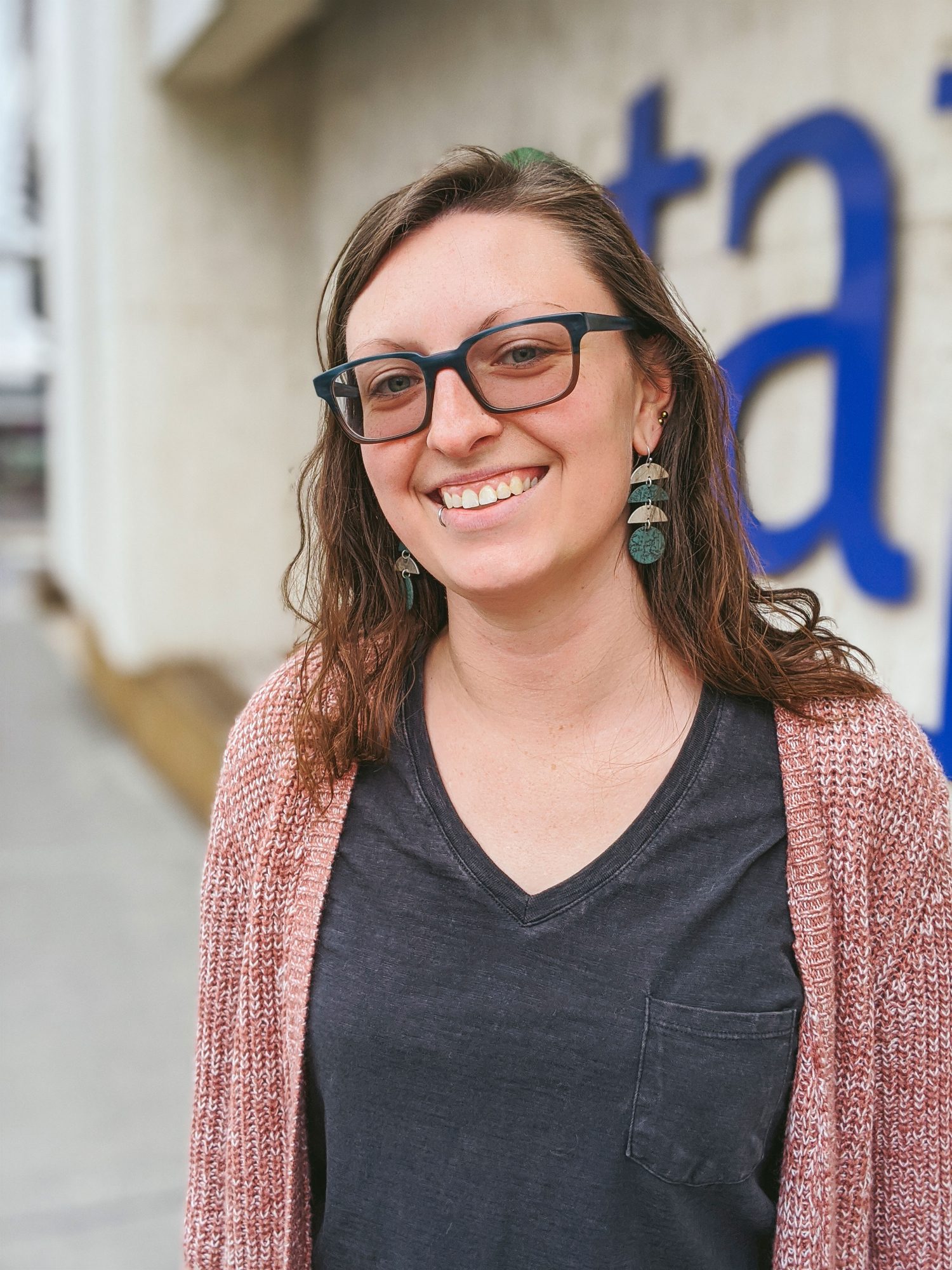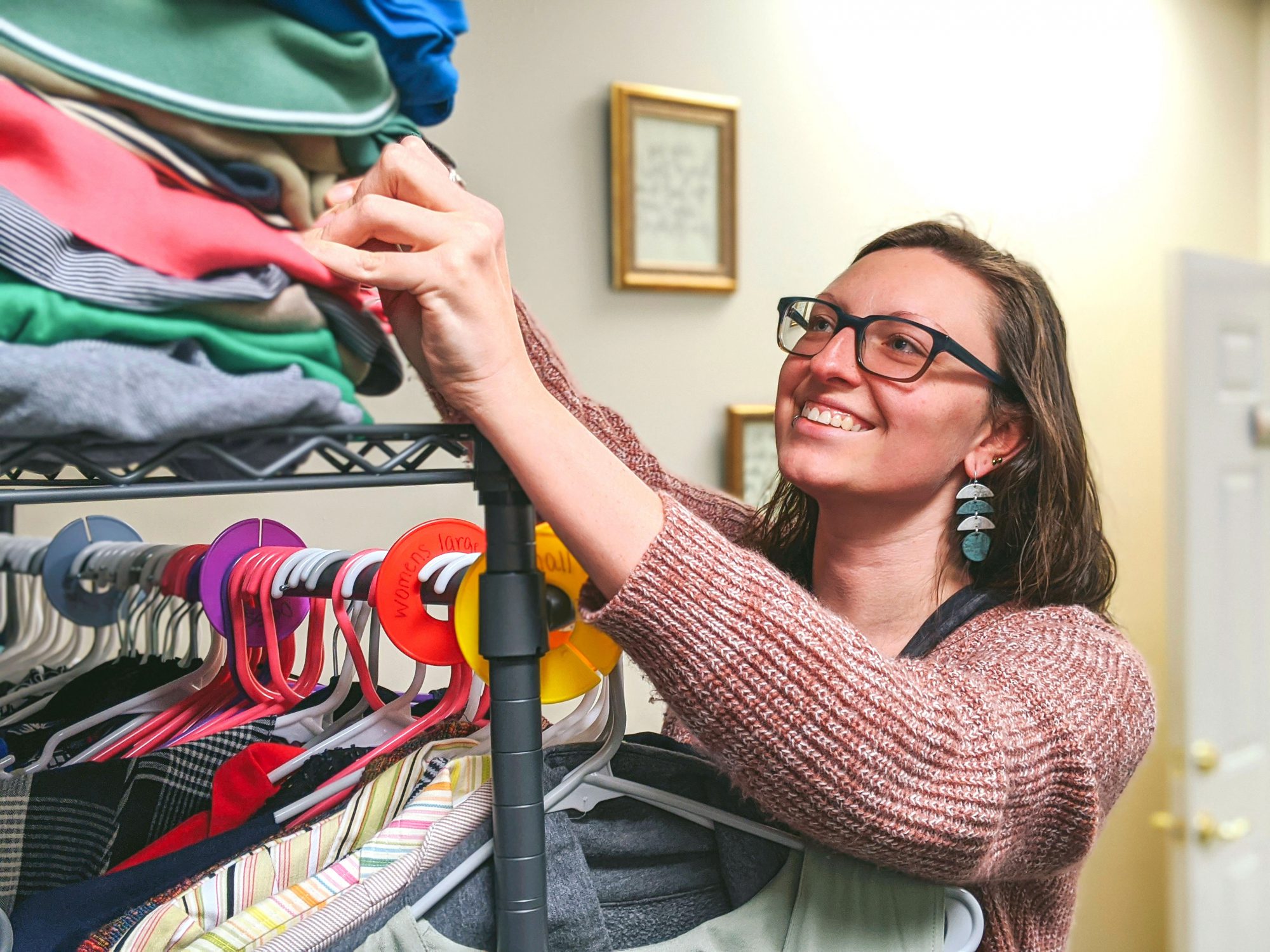HELP Finds Dignity and Worth in the Journey from Homelessness
They say that moving is one of the most stressful events in life—but that’s not how Hannah Oakes sees it. From her perspective, it’s a celebratory occasion. On moving day, she’s been known to gather together a few helpers and a truck. She has a housewarming gift ready. Maybe there’s even a pizza involved.

Moving day is different for Hannah because she’s helping young men and women who are homeless to move off the streets into permanent housing. Hannah, who works in TAP‘s Homeless Employment and Learning Program (HELP), sees her job as not just about serving clients, but about finding ways to help them experience dignity and worth in the process.
The little touches, like the housewarming gifts packed by Legacy International, “are a way of not just saying ‘here’s your empty apartment,’ but being able to go a step further and make the experience dignified for you,” says Hannah.
Employment First
While moving a client into permanent housing is always a highlight, usually it’s a last step. Hannah works with youth ages 16–24 who are homeless, at risk of becoming homeless, or transitioning out of homelessness. Most of them don’t have support systems, for a variety of reasons: they may have been kicked out of their parents’ houses or aged out of foster care, or be in recovery from addiction at one of the shelters in the area. “We always have to look at it from an employment first perspective and then after we get employment established we look into housing,” Hannah explains.
She spends time each week working with young people on developing résumés and cover letters, and coaching them on the job search and application process. For an additional learning opportunity, Wells Fargo partners with HELP to provide mock interviews. Hannah also teaches weekly life skills classes at partner organizations around the valley. “We always relate the life skills back to jobs,” she says. “We talk about nutrition, how to spend less money on food, what lunches to pack for work, self-care, coping skills, appropriate appearance for work, and budgeting.” The program also helps youth with tangible support for employment, such as paying for work uniforms or interview attire.
HELP Success Stories
The focus on work is paying off. At any given time HELP is working with 70–80 individuals, and typically places more than 60% of these young people into employment. Hannah recalls two individuals who went through mock interviews with Wells Fargo and later landed real interviews with the company. Both of them had come to TAP from other partner organizations in the community that work with homeless individuals. Both needed résumé assistance, help with budgeting, and interview attire. “Both have been there for over a year; we were able to give [Wells Fargo] two really successful employees,” states Hannah proudly.
Respecting Everyone’s Unique Story
Not every success story looks the same. “Some people come into the program and they are really motivated and have all the pieces and just need a little push, or a very specific kind of help,” explains Hannah. “Other times a person is coming in and they’re unsheltered, don’t know where their next meal is coming from, they’re heavily using and they’ve never had a job. Then the program is about really seeing those people each day or each week to help them along with the baby steps of success.”

Hannah recalls a specific youth who came to the program in 2017. He was kicked out of his home at age 16 but managed to graduate from high school despite being homeless for more than two years. At the time that he came to HELP he was sleeping outside, had untreated mental health issues, and was initially hostile. “In the first few months I saw him every day; I took him to the hospital multiple times for suicidal ideations and psychotic breaks,” recalls Hannah. Over time Hannah was able to work with him and gain his trust. Today, he’s permanently housed in an apartment and receives Social Security income, which he supplements with side jobs. For almost two years he hasn’t missed any mental health appointments or bills. He can look back and acknowledge his steps to success and is happy with how far he has come.
Reaching Out
“We’re reaching out to the fringes of the homeless population and allowing them to feel dignity and worth and to access [the help] they don’t know how to gain otherwise” says Hannah. “The ultimate goal regardless of what specific service they receive is to get them at least one step closer to stability.”

